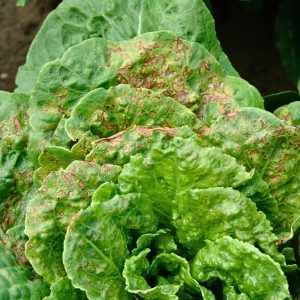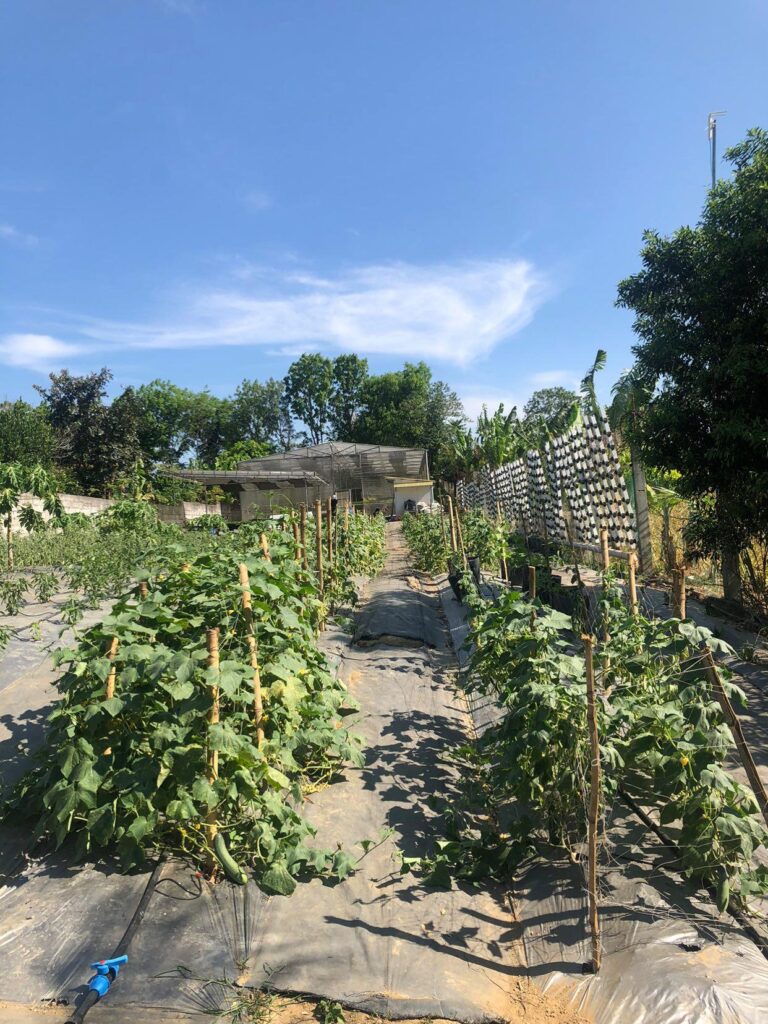Tomato Spotted Wilt Virus in Lettuce : Wilt & Die Series
 Tomato Spotted Wilt Virus (TSWV), also known as Spotted Wilt or Bud Necrosis, is a plant disease that affects a wide range of crops, including lettuce. TSWV is a member of the Tospovirus genus, one of the most economically damaging groups of plant viruses worldwide. While the virus has a broad host range, in lettuce, it can lead to significant yield loss, potentially impacting the industry’s economics and disrupting supply and demand dynamics.
Tomato Spotted Wilt Virus (TSWV), also known as Spotted Wilt or Bud Necrosis, is a plant disease that affects a wide range of crops, including lettuce. TSWV is a member of the Tospovirus genus, one of the most economically damaging groups of plant viruses worldwide. While the virus has a broad host range, in lettuce, it can lead to significant yield loss, potentially impacting the industry’s economics and disrupting supply and demand dynamics.
Causes and Transmission of TSWV
TSWV is unique among plant viruses because it is transmitted by thrips, small insects that feed on plant tissues. The primary vector species for TSWV are the Western Flower Thrips (Frankliniella occidentalis) and the Onion Thrips (Thrips tabaci). These insects acquire the virus as larvae by feeding on infected plants, then transmit the virus to healthy plants as adults.
While TSWV was initially named for its impact on tomato crops, over 800 plant species have been reported as hosts for this virus, including commercial, ornamental, and weed species. In lettuce cultivation, TSWV can cause significant issues, with symptoms that can range from mild to severe.
Symptoms of TSWV
In lettuce, TSWV often causes a range of symptoms that can vary based on the plant’s age, the virus strain, and environmental conditions. Infected plants often exhibit a general yellowing or bronzing of leaves, coupled with a distinctive pattern of concentric rings or spots. As the disease progresses, the spots can coalesce, leading to larger necrotic areas. Infected plants often display stunted growth, and in severe cases, the disease can lead to plant death.
Economic Impact of TSWV
TSWV has a significant economic impact worldwide. In the United States alone, annual losses due to TSWV are estimated to be in the range of hundreds of millions of dollars across all affected crops. In the case of lettuce, one of the most widely grown leafy vegetables, these losses can translate into significant cost increases for growers and potentially higher market prices for consumers. Moreover, significant outbreaks can disrupt supply chains, affecting availability and potentially leading to further price instability.
Managing TSWV
Given the complexities of TSWV’s transmission, effective management requires a multi-pronged approach. Here are key strategies:
Thrips Management: Since thrips are the primary vectors for TSWV, controlling thrips populations is a crucial part of managing TSWV. This can be achieved through various strategies, including the use of insecticides, the introduction of predatory insects, and the use of physical barriers such as row covers or insect netting.
Cultural Practices: Good agricultural practices can also help manage TSWV. This includes regular scouting and monitoring for signs of thrips and the virus, as well as the removal and proper disposal of infected plants to reduce sources of the virus.
Resistant Varieties: Some lettuce varieties have shown resistance to TSWV. Incorporating these varieties into a cropping system can help reduce the risk of significant disease outbreaks.
Crop Rotation: Rotating with non-host crops can disrupt the lifecycle of the thrips and decrease the virus’s chances of being transmitted.
NutriHydro Products: Using the NutriHydro Lettuce formula, NutriHydro pH Control, and NutriHydro Biostimulants can bolster plant health, enhancing the plant’s ability to resist diseases. NutriHydro Lettuce Formula ensures the plants receive optimal nutrition, while NutriHydro pH Control helps maintain the nutrient solution within the ideal pH range for nutrient absorption. NutriHydro Biostimulants, applied as a foliar spray, enhance plant resistance against diseases by boosting their innate defense mechanisms.
In conclusion, TSWV poses a significant challenge to lettuce growers, but with comprehensive management strategies and optimal plant nutrition, the risks posed by this virus can be effectively mitigated.
Author
Christopher Tuason
Christopher Tuason
NutriHydro is a manufacturer of plant nutrients based in the Philippines. They are known to grow the healthiest, heaviest, and largest lettuce in the country. NutriHydro products are available to purchase from the following e-commerce platforms.
Lazada: bit.ly/3asMYXN
Shopee: bit.ly/3nRJX6Z
Basilyard: bit.ly/346Kklw
NutriHdyro Website: bit.ly/434MoY6





